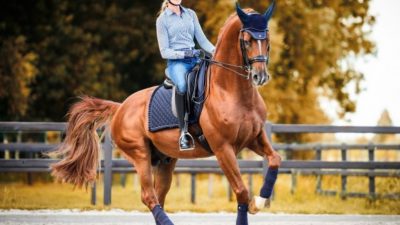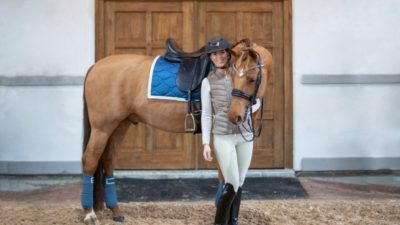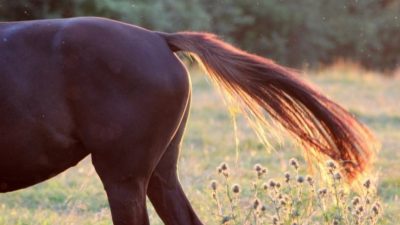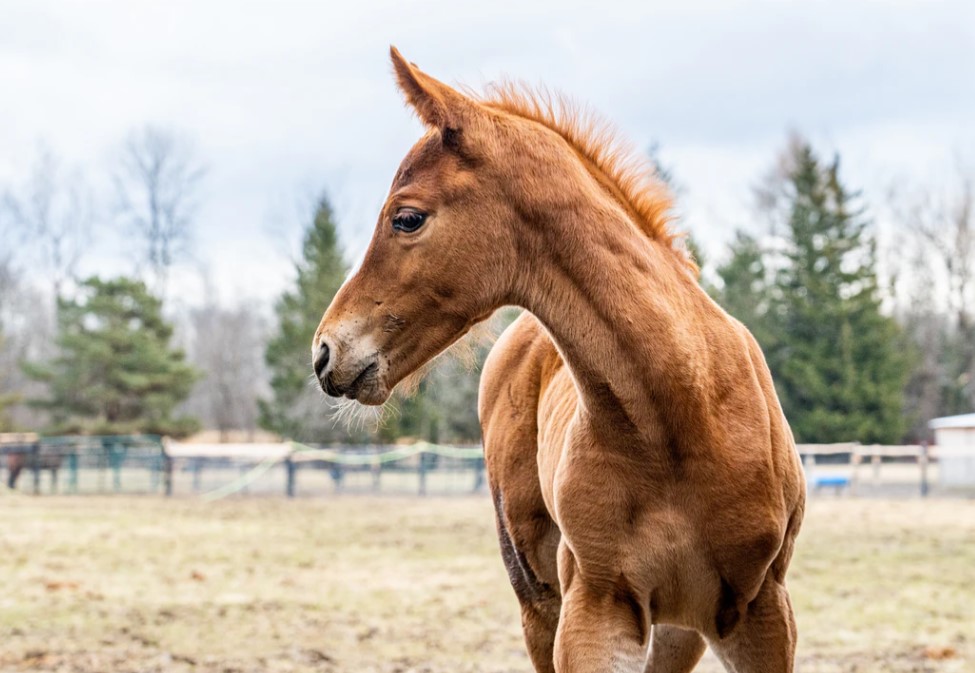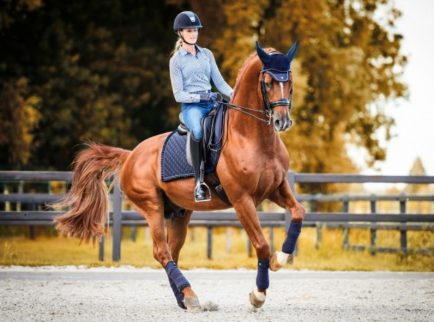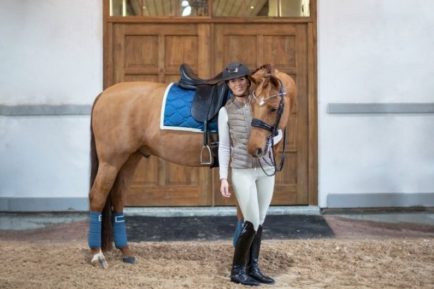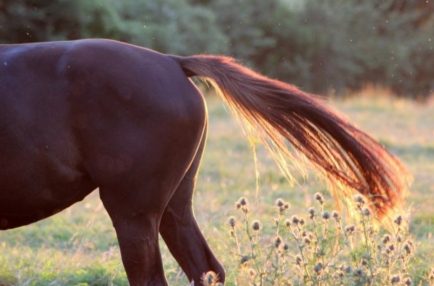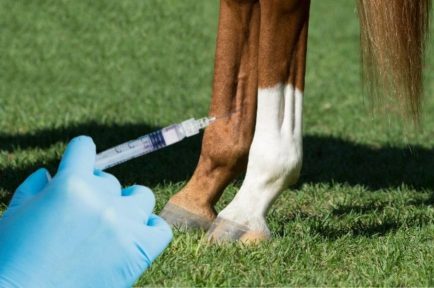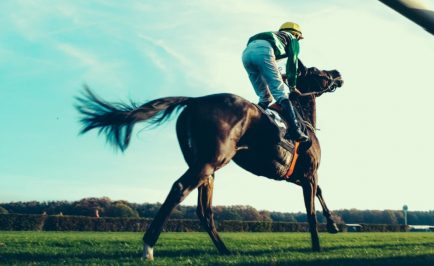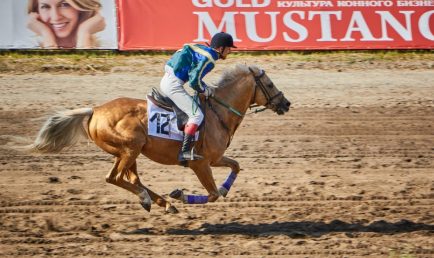Several years ago, my Dutch Warmblood gelding was nearing retirement, and I decided to look for a new dressage prospect. I imagined this would be a mature, well-trained horse, but after looking at 17 horses I found Aspen, a green but talented 4-year-old Lusitano. Having previously owned two 3-year-old, off-the-track Thoroughbreds, I knew this was going to be another young-horse challenge for me.
From my other young horses, I learned that at age 4 or 5 the basics are building connection and balance and channeling the energy from the hind end to front. I remembered countless circles to help the horse get his inside hind leg under him and transitions to improve his balance. Young horses buck or scoot if they feel off balance or frightened and I thought I was ready for all this, but what I soon found out is how incompetent a young horse makes you feel. His unsteadiness and wavering balance and tempo made me feel that I could barely ride.
I was grateful to have a trainer work with the horse and to support me through the awkwardness of the first year. We started by confronting my fear of the out-of-control moments. It was hard to ask for a canter when I knew it was inviting a buck.
By the time Aspen turned 5, we were making progress with the basics. This was, I thought, a welcome change from my first horse who, at age 5, would explode out of a quiet walk into a huge buck followed by his best imitation of the homestretch of the Derby. My second horse leapt into a series of airs far above the ground when I walked him around the show grounds. My next horse chose a special evasion of going backward as fast as possible with no concern for what he might run into. Then one day, Aspen, a quiet and friendly horse, became a “teenager” at the age of 5. While trotting around a nice circle, for no apparent reason, he put on the brakes and refused to go forward. This continued and every time a request to resume forward motion was followed by a short series of bucks.
I wondered if the 5-year-old thought it was his time to challenge authority or perhaps had nothing to do with the age and everything to do with the stage of training. As his training made him stronger and more confident, I started asking myself, Have I been provoking these oppositional behaviors in my young horses? Sometimes I know I have been to blame, being too restrictive in my attempts to steady my hands or no longer following his motion with my seat. Aspen showed his frustration at times by bucking or tossing his head. It took me a while to realize that when I asked him to do something new, such as a shoulder-in, I tended to revert back to this and freeze into one position. I was telling him to stop, while at the same time I thought I was telling him to go. This happened when I confronted his rebellion by pushing him forward. I squeezed with my legs but was rigid with my back and hands so he could not come through his back, and the result was an explosive response. When I became aware of this pattern, I started to concentrate on relaxing and making sure that my seat kept following his motion.
With the help of my trainer, we have gradually worked through it. I stopped freezing and worked on following with my seat through his resistance. He began to relax and the behavior faded out. He is now a happy horse moving comfortably forward and straight.
Regardless of each horse’s unique personality, I can now tell you that when you buy a young horse, you take on a big responsibility. The skills, muscle development and behaviors you give this horse determine his future. If he develops bad behaviors that you or your trainers do not work through, he may come to an unhappy end. A young horse is uncertain, but he wants to trust you, and it is up to you to build on that desire to trust. I am grateful to my youngsters for all they have taught me.
Original article: Learning from Young Horses (dressagetoday.com)
Royal Equestrian – Riding Apparel, Horse Fashion, Horse Tack (royalequestriancollection.com) – check our website to purchase and enjoy our products for your horses and you.










